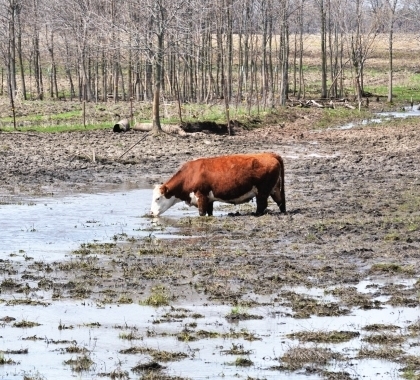A federal district judge halted the U.S. Environmental Protection Agency’s (EPA) two-year delay of the agency’s restrictive Waters of the United States (WOTUS) rule.
President Donald Trump signed an executive order in February 2017 directing EPA to withdraw and rewrite WOTUS. EPA responded by suspending the rule for two years while the agency worked on a replacement.
Judge David Norton of the U.S. District Court in South Carolina ruled EPA had not followed the proper procedures to delay the rule, by not allowing a public comment period. He enjoined the delay.
Norton’s decision makes WOTUS the law in the 26 states where district courts have not halted the regulation. It is not applicable in the 24 states where district courts have stayed the rule.
Expanding Authority
The 1972 Clean Water Act (CWA) prohibits the discharge of pollutants into “navigable waters” without a permit.
Over time, the federal government expanded the definition of the types of waters protected by the CWA to include ephemeral waterways and wetlands, including land that is only seasonally wet and physically distant from and not directly feeding into navigable waterways. This brought even privately owned, isolated ponds and abandoned gravel pits under the federal government’s regulatory authority.
In two separate cases, the U.S. Supreme Court struck down expansive definitions of navigable waters, limiting EPA’s authority to regulate isolated bodies of water. However, the Court refused to provide a strict definition of the limits to the government’s CWA authority.
In 2015, the EPA under President Barack Obama removed the limiting word “navigable” from the federal government’s CWA authority, greatly expanding the number and kinds of waters and amount of private property to be federally regulated. States, property owners, and farm and business groups challenged WOTUS in court, and two federal district courts placed stays on the rule covering the states under their jurisdictions. In August 2015 the Sixth Circuit Court of Appeals in Cincinnati issued a nationwide stay on WOTUS, only to have its decision overturned by the U.S. Supreme Court in January 2018, with the Court ruling the matter properly belongs before district courts.
Sees Setback As Temporary
The current legal arrangement won’t last, says Ilya Shapiro, a senior fellow in constitutional studies at The Cato Institute.
“The EPA tried to skip a few steps in repealing WOTUS, and the court wouldn’t go for it,” Shapiro said. “This is a procedural ruling and shouldn’t affect long-term efforts to reform this regulation.”
Desire to Simplify
The Trump administration entered the legal fray with a goal of simplifying and clarifying WOTUS, says Anthony Francois, a senior attorney with the Pacific Legal Foundation.
“The Trump administration, through an executive order, said we’re not going with this overly broad definition of what navigable waters are: we want to go with something that is more reasonable, more compatible with the statute, and supportive of economic growth,” Francois said. “With the delay, EPA tried to prevent anybody from needing to comply with the 2015 regulations, while giving itself time to develop a new, narrower, definition of navigable waters.”
Trump and his team have prioritized putting the brakes on overly broad, economically harmful regulations the Obama administration put in place, says Francois.
“The Trump administration’s regulatory reform efforts are targeting these very aggressive, largely illegal, regulations adopted in the final couple of years of the Obama administration, things like the Clean Power Plan and WOTUS,” Francois said. “The challenge to the WOTUS delay is part of the Left’s larger efforts to stymie the Trump administration’s deregulation and reform efforts.”
Proper Definition Needed
EPA has long needed a proper definition of navigable waters, says Francois.
“Under the Clean Water Act, if you own a facility on a river, lake, or on the coast and you discharge pollution, you need a permit,” said Francois. “But not having a legal, working definition of ‘navigable waters’ has expanded the government’s clean water authority beyond rivers and lakes, meaning if you’re a farmer who has a low spot on your property 50 miles from the nearest actually navigable river, you may be surprised to find the U.S. Army Corps of Engineers or EPA expects you to get their permit to work your own land.
“The essence of the problem drawing all this litigation is the overbroad, vague definition of navigable waters,” Francois said.
Kenneth Artz ([email protected]) writes from Dallas, Texas.





